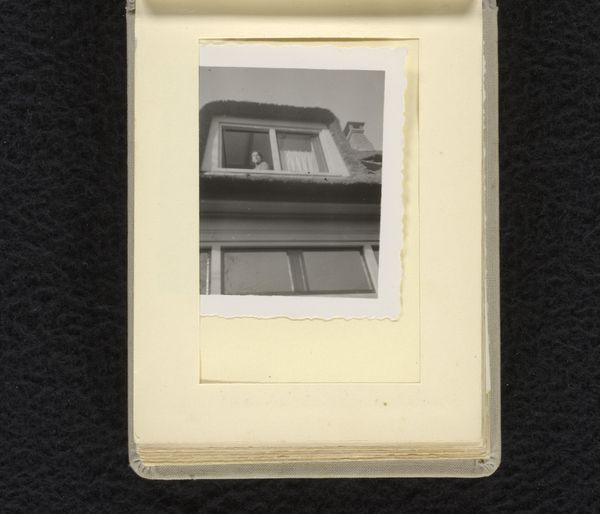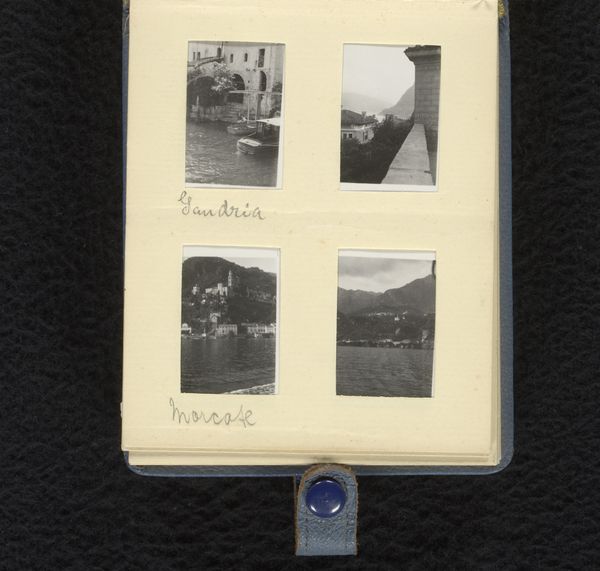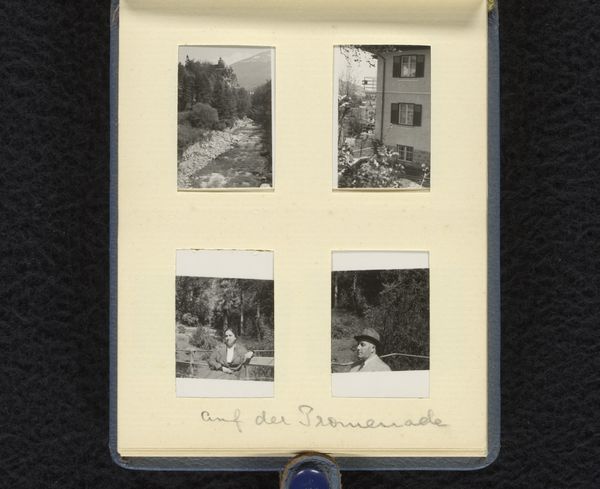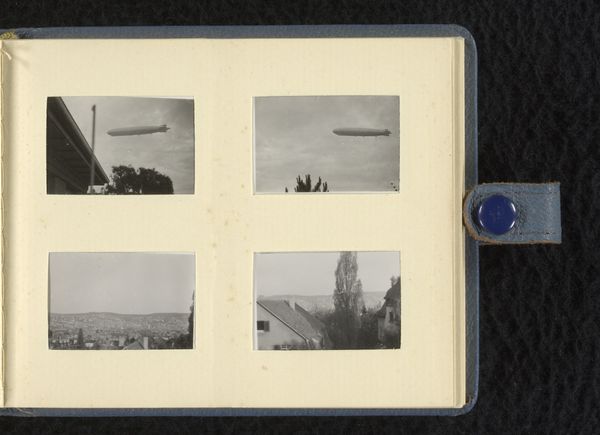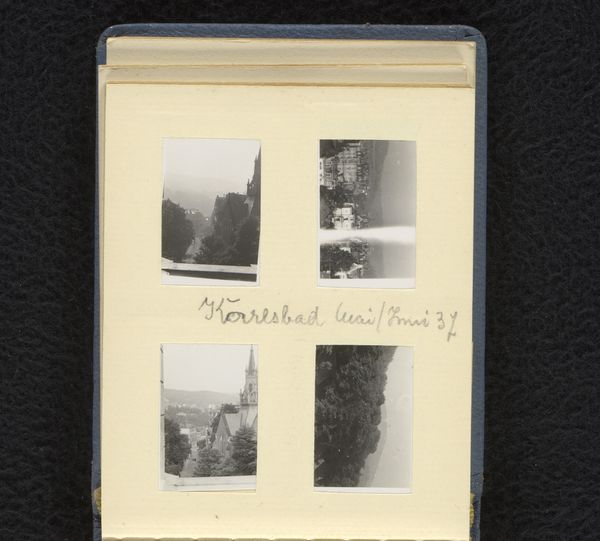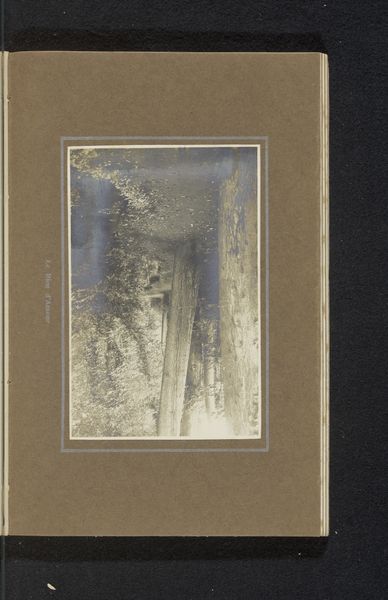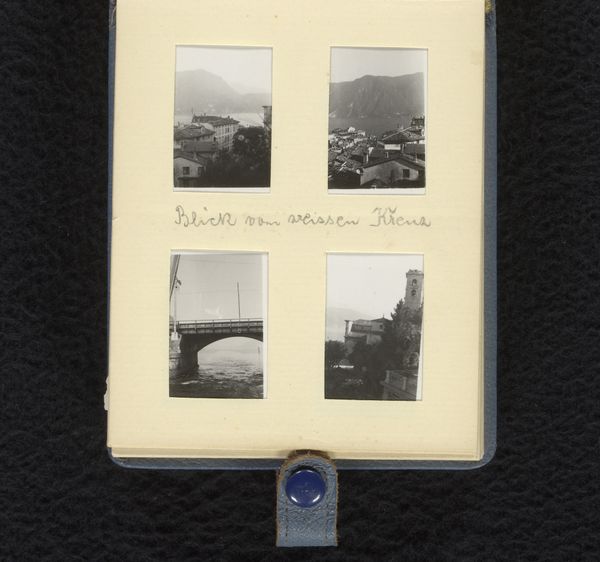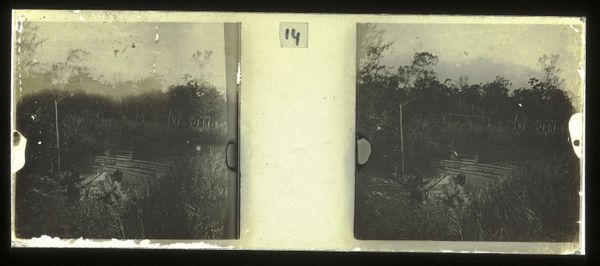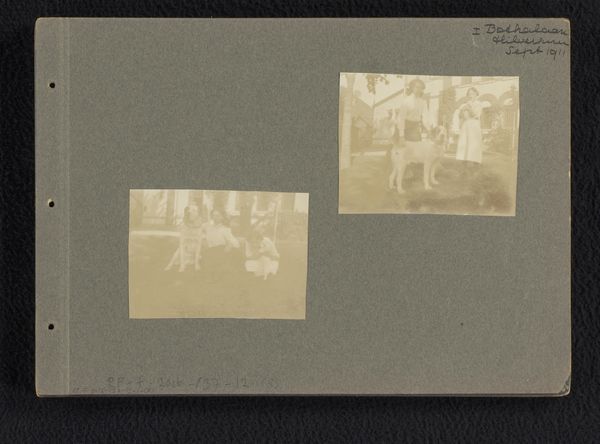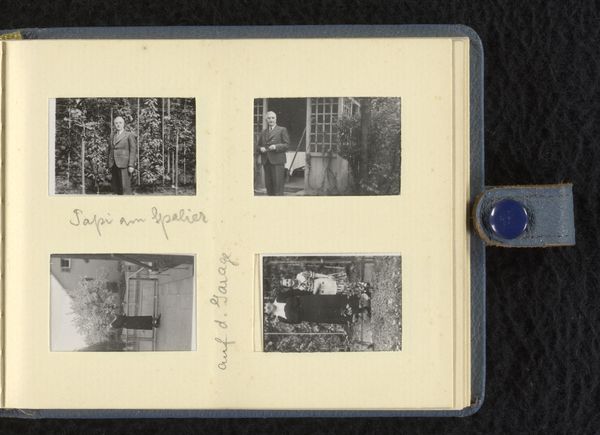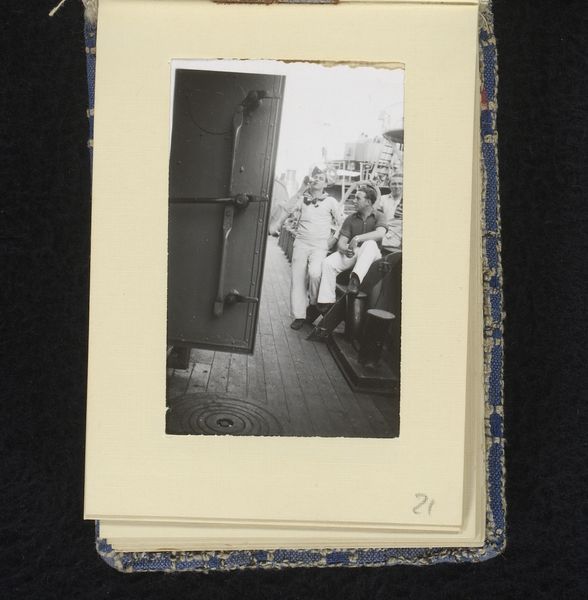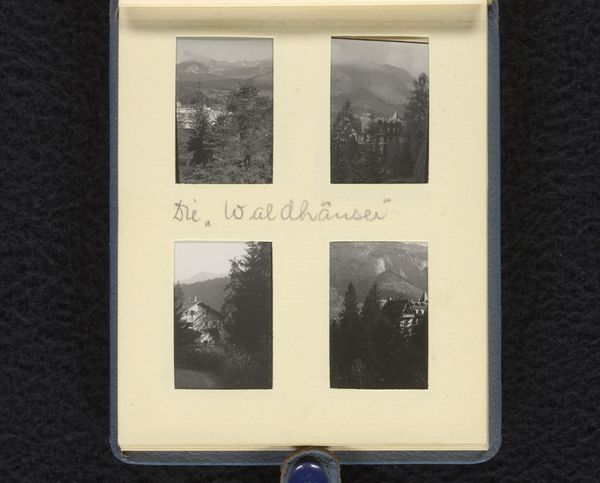
Graven van Meir Wachenheimer, Ferdinand Schohl, Hermann Moos en Josefine Moos-Levi, 1937, Stuttgart 1937
0:00
0:00
photography
#
portrait
#
still-life-photography
#
photography
#
realism
Dimensions: height 33 mm, width 44 mm, height 85 mm, width 105 mm
Copyright: Rijks Museum: Open Domain
Curator: These are photographic images of grave sites, collectively entitled "Graven van Meir Wachenheimer, Ferdinand Schohl, Hermann Moos en Josefine Moos-Levi, 1937, Stuttgart," dating to 1937, with authorship attributed to the familie Wachenheimer. Editor: My first thought is somber elegance. The framing within a larger context gives them a reverent intimacy. Curator: Precisely. The composition emphasizes a careful attention to detail. Notice the contrast in tonality; the dark headstones are set against lighter borders, accentuating their geometric forms. Editor: As well as, historically speaking, we are close to World War II. The documentation, nearly clinical presentation of Jewish burial sites gains gravity, wouldn't you say? Curator: Yes, contextually this image is particularly evocative. One has the palpable sense of loss, deepened by what we know to come historically, as an elegiac encoding into what became the systematic ruin and attempted erasure of jewish life. Consider the semiotics of what’s photographed and why. Editor: To add onto your semiotic claim, The very act of photographing headstones, documenting these names and places feels like an act of remembrance—a subtle protest, or resistance, in its own way, doesn't it? As these images bear witness to a family history imperiled by looming catastrophe? Curator: It is quite sobering to perceive this in retrospect; as the lens becomes not merely an apparatus of record, but also a means of safeguarding. How form transcends documentation toward what almost could be seen as preservation for posterity. Editor: It shifts the function of the images entirely. I agree. These aren't simple snapshots; they're potent visual reminders. And these portraits transform into potent relics imbued with memory. It certainly makes me consider how the political reality affects an image. Curator: Right. The starkness and formalism almost feel deliberate. To look closely into the texture and visual choices, the greyscale adds a particular mood. Editor: Thinking about it, one realizes there are several different ways one may think of this image; whether to see it as pure photography, or consider history and culture. Curator: I've really begun to understand how photography can transcend beyond an aesthetic surface when linked to events and culture.
Comments
No comments
Be the first to comment and join the conversation on the ultimate creative platform.
